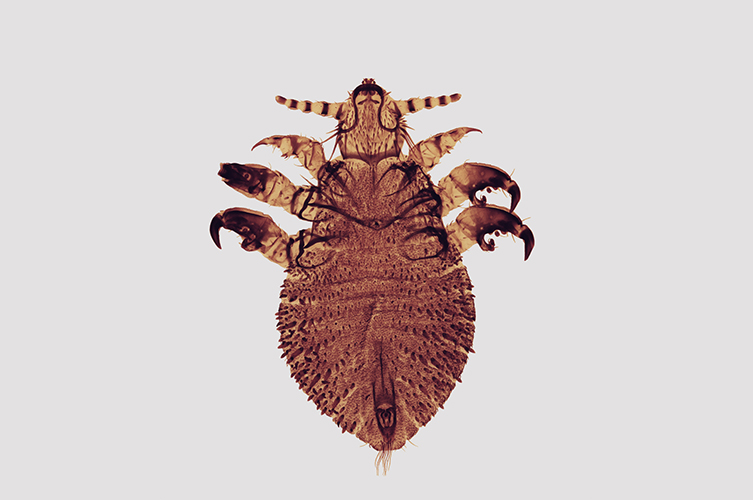
Our digitisers have completed imaging the entire Museum's parasitic louse slide collection which represents the first full collection digitised under the Digital Collections Programme.
We now know that the parasitic louse collection currently has 70,667 slides, making it one of the largest and most taxonomically comprehensive phthiraptera collections in the world. These images and specimen records are now freely and openly available through the Museum’s Data Portal.
Jennifer Pullar, Communications and Resource Manager for Digital Collections, is pleased that people are making use of the portal: 'Our collections data has so far been cited in over 50 publications, and over 7.9 billion records have been accessed in over 125,000 downloads. If you are using Museum collection data we would love to hear about it.'
How do we digitise?
For each specimen the whole slide is imaged, capturing both the specimen and its labels. The label states where and when the specimen was collected and from which host. Specimen images at five times magnification were also taken for representative specimens of each species.

Slide digitisation set up
Why Lice?
Lice are permanent ectoparasites, meaning they live on the outside of their bird and mammal hosts. There are around 5,000 louse species, with the majority being unique to a particular host species.
As their evolutionary history is closely related to that of their hosts, parasitic lice are frequently used as a model to study co-evolutionary processes.
We are able to compare different species of lice to see the variety of adaptations that have enabled them to parasitise a range of hosts.
-

The Elephant louse (Haematomyzus elephantis) has sharp claws to grip the elephants thick hide - it’s a sucking louse and uses its “trunk” to pierce the skin and suck the blood of its host
-

There are two species of lice (Coloceras piageti and Colombicola bacillius) that live on different areas on a turtle dove
-

The walrus louse (Antarctophthirus trichechi ) has evolved needle-like front legs to piece the skin of its host
There are two species of lice that live on different areas on a turtle dove and have evolved to avoid being removed by the host during pruning. The first lives among the feathers on the wings, and with its elongated, thin body it is able to hide between the barbs of the feathers. The second lives on the body and has a different technique altogether. It burrows part of its head into the body of the dove and therefore has a much better grip to hold one while the bird preens itself.
Few insect species have colonised the open ocean despite their success on land. There are, however, some insects that can be found in the open ocean - these are lice from the family Echinophtiriidae that infest pinnipeds (sea lions, walruses and seals). These lice have adaptations to allow them to survive in this aquatic environment.
In comparison to other species of lice, they have a much more rounded spherical body and shorter, slender front legs in with strong middle and back legs. Some species are also able to maintain a bubble of air around them for gaseous exchange during extended periods of being submerged.

Country information for the louse collection so far
Future plans
The next phase of the louse digitisation project is to get information from the specimen labels into a digital format to facilitate on-going research. So far the country information for a third of the collection has been captured and indicates that the Museum’s louse collection consists of a wide distribution of material with large quantities of material from the UK and former British colonies such as Australia, India, and Kenya.
Subsequent transcription aims will be to capture data about when the specimens were collected, and from which hosts, which will help to provide invaluable information about geo-spatial distributions within a host’s range and potentially new host associations.
Who’s using our data?
We are on a mission to digitise the Museum’s collection of 80 million specimens in order to make the historic, geographic and taxonomic data, which has been gathered over the last 250 years, available to the global scientific community.

Through the Data Portal and our partners such as the Global Biodiversity Information Facility(GBIF), more than 7.9 billion records have been accessed in over 125,500 downloads since April 2015. Through GBIF we are also able to see which scientists are using our data in their publications, and through Altmetric we are able to see how many people are talking about our data online. So far we have been cited in 51 papers and referenced over 400 times online.
Critical information is currently locked away within hundreds of millions of natural history specimens and archives across the globe. Our ultimate goal is to unlock this treasure trove of information so that scientists, researchers and data analysts from around the world can use this information to tackle some of the big questions of our time.
We need your help
We are looking for digital volunteers to spend a few minutes helping us transcribe data on specimen labels. With your help, we will be able to make this data and information publically available on the Data Portal. To find out more about how you can contribute towards scientific research please visit the take part page.
If you would like to make use of the Museum’s Phthiraptera data please visit the Data Portal. To stay in touch with the digital collection programme and our digitisation projects please visit the website or follow us on twitter.
Project team
- Laurence Livermore
- Louise Allan
- Olha Schedrina
- Paul Brown
- Ben Price
- Dr Vince Smith
- Helen Hardy
- Jennifer Pullar
Digital Collections Blog
Catch up with the latest digitisation techniques and technology.